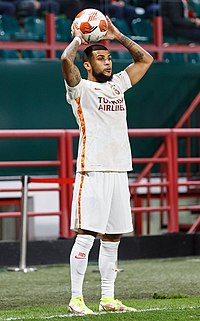
Photo from wikipedia
Itoh, R and Hirose, N. Relationship among biological maturation, physical characteristics, and motor abilities in youth elite soccer players. J Strength Cond Res XX(X): 000-000, 2019-Studies investigating skeletal maturity and… Click to show full abstract
Itoh, R and Hirose, N. Relationship among biological maturation, physical characteristics, and motor abilities in youth elite soccer players. J Strength Cond Res XX(X): 000-000, 2019-Studies investigating skeletal maturity and motor abilities in youth Asian elite soccer players are lacking. We aimed to investigate the cross-sectional relationship among skeletal age (SA), physical characteristics, and motor abilities in youth elite soccer players. Skeletal age is commonly used to estimate the maturity status of youth athletes using a hand-wrist radiograph. We enrolled 49 youth elite male soccer players (12.7 ± 0.2 years). Height, body mass, body fat percentage, circumference (thigh/calf), flexibility, 10-m/50-m sprint, 10-m × 5 shuttle run, the crank test, 5-step bounding, Yo-Yo intermittent recovery test level 2, and cooper run were measured. Participants were divided into early (n = 14), average (n = 22), and late (n = 13) maturation groups according to their chronological age (CA) and SA based on the following criteria: SA-CA < -1 year, SA-CA = ±1 year, and SA-CA > +1 year, respectively. The difference in parameters among the groups was analyzed using one-way analysis of variance and Tukey's post hoc test. Statistical significance was set at p < 0.05. The early and average maturation groups were taller and heavier and had a larger circumference than the late maturation group (p < 0.05). Conversely, the early and average groups were significantly faster in 50-m sprint (p < 0.05) and scored higher in 5-step bounding (p < 0.05) than the late group. There was no difference in other parameters among the groups. In conclusion, the difference in biological maturity influences physical and physiological development, particularly height and muscular power, in youth elite soccer players.
Journal Title: Journal of Strength and Conditioning Research
Year Published: 2019
Link to full text (if available)
Share on Social Media: Sign Up to like & get
recommendations!